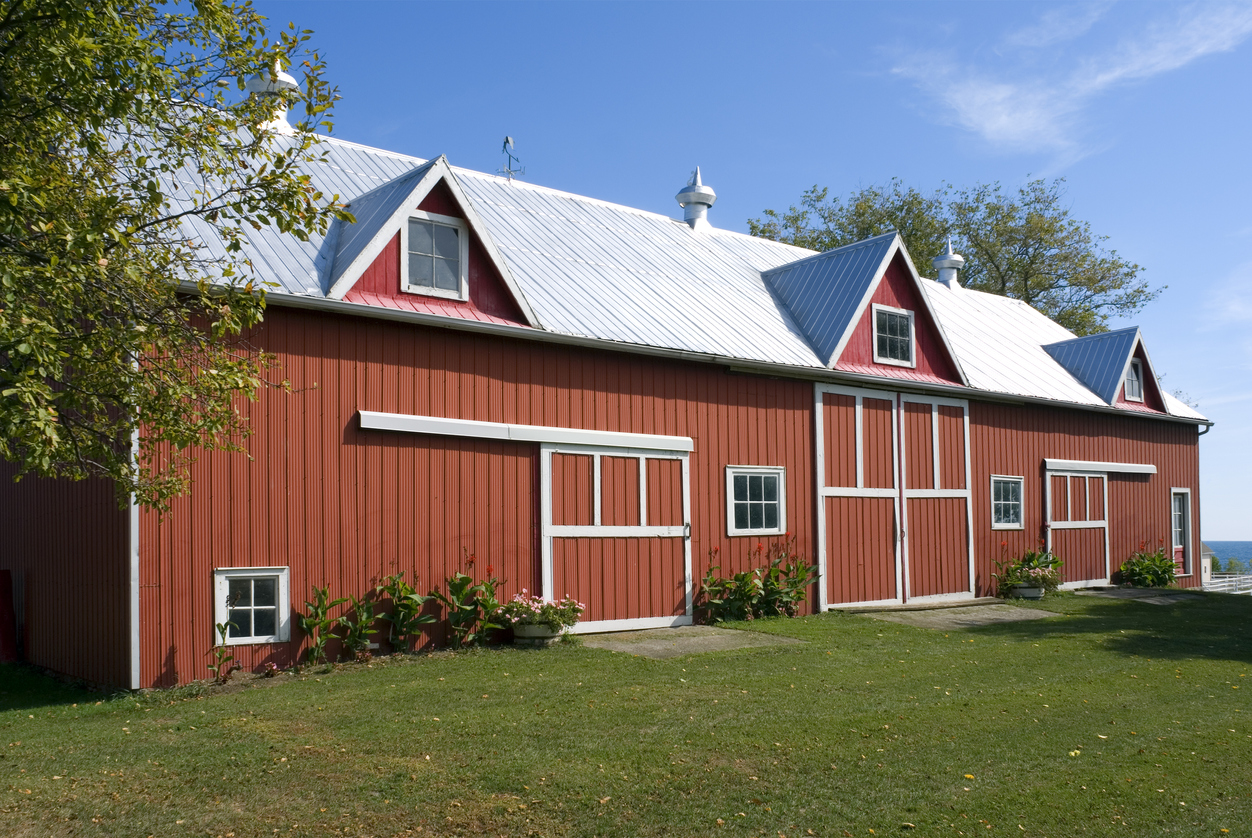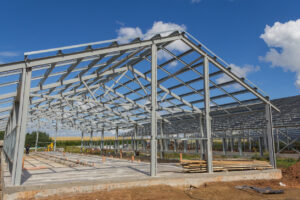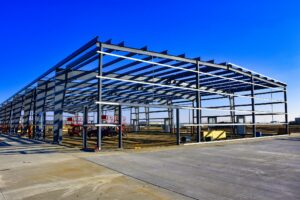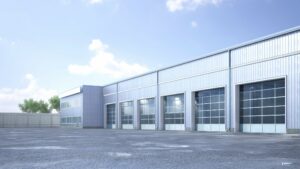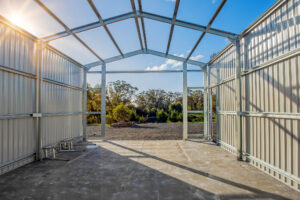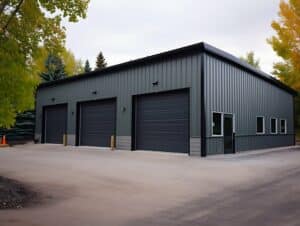In this article, we will explore the foundations of building a church building. From understanding the importance of a church building to navigating the construction process and design, this comprehensive guide will provide you with insights on how to successfully embark on your church construction journey.
Expanding on the significance of a church building, it is important to note that the layout and design of a church are often steeped in tradition and symbolism. The arrangement of pews, the positioning of the altar, and the presence of a baptismal font all have specific meanings within the context of religious practices.
For example, the altar, typically placed at the front of the church, symbolizes the presence of God and serves as the focal point of worship services.
In addition to its spiritual and communal functions, a church building can also be a hub of artistic and cultural expression.
Many churches house priceless works of art, such as paintings, sculptures, and intricate carvings, that not only beautify the space but also serve as visual representations of religious stories and teachings.
The architecture of a church building, whether it be Gothic, Baroque, or modern, reflects the artistic styles and cultural influences of the period in which it was constructed, providing insight into the history and evolution of both architecture and religious practices.
Table of Contents
- The Symbolism of Church Architecture
- The Role of a Church in a Community
- Preliminary Steps in Church Construction
- Designing Your Church Building
- Financing Your Church Building Project
- Navigating the Construction Process
- Conclusion
- Frequently Asked Questions
The Symbolism of Church Architecture
Church architecture is laden with symbolism, providing a visual representation of religious beliefs and teachings. Each element within the building holds profound meaning.
The soaring ceilings symbolize the vastness and transcendence of God, while the altar represents the presence of Christ.
Windows, adorned with colorful stained glass, bathe the interior with ethereal light, evoking a sense of divine presence and enlightenment.
The layout of the church, specifically the nave, chancel, and sanctuary, is designed to create a sacred space conducive to worship and contemplation.
In addition to visual symbolism, the acoustics of the church building are carefully considered to enhance the music and spoken word, heightening the spiritual experience for the congregation.
Furthermore, the architectural style of a church often reflects the historical and cultural context in which it was built.
For example, Gothic architecture, with its pointed arches and ribbed vaults, emerged in the medieval period as a way to inspire awe and draw the eyes upward toward heaven.
On the other hand, Baroque churches are characterized by their ornate decoration and dramatic use of light and shadow, aiming to create a sense of theatricality and grandeur.
Moreover, the exterior of a church is not just a shell but a reflection of the community it serves.
Facades may feature intricate carvings, statues of saints, or elaborate doorways, all of which serve as visual representations of the faith and values of the congregation.
Check out: Blueprints And Ideas For Church Plans
The Role of a Church in a Community
Churches play an integral role in the fabric of a community. They serve as pillars of support, providing spiritual guidance, comfort, and assistance to those in need.
Beyond religious services, churches often offer various outreach programs, such as food pantries, counseling services, and youth activities.
Furthermore, churches organize community events that foster a sense of fellowship and belonging. From holiday festivals to volunteer initiatives, these gatherings strengthen the bonds within the community and promote a spirit of togetherness.
Churches also serve as centers for cultural preservation and education. Many churches house historical artifacts, documents, and artwork that offer insight into the community’s past.
Through guided tours and educational programs, these churches help preserve local history and traditions, ensuring that future generations remain connected to their roots.
Additionally, churches often partner with local schools and organizations to provide educational and recreational opportunities for community members.
Whether through tutoring programs, sports leagues, or arts workshops, churches contribute to the holistic development of individuals of all ages, enriching the community as a whole.
Did You Know?
While in-person attendance is recovering post-pandemic, online services remain popular. Multi-campus churches are experiencing significant growth, with identical campuses growing by 25%.
Preliminary Steps in Church Construction
Before commencing the construction of a church building, certain preliminary steps must be taken to ensure a successful project.
Building a church is not just about the physical structure; it is about creating a sacred space that fosters community, worship, and spiritual growth.
One crucial aspect to consider is the location of the church. Whether it is nestled in a bustling city center or surrounded by serene countryside, the surroundings can greatly impact the design and atmosphere of the church.
Factors such as accessibility, natural lighting, and noise levels should all be taken into account during the planning stages.
Assembling a Building Committee
The creation of a building committee is essential in overseeing the construction process. This committee should consist of individuals with diverse backgrounds and expertise, including architects, contractors, and members of the congregation.
Their collective knowledge will guide the decision-making process and provide valuable insights throughout the project.
Furthermore, the building committee plays a vital role in ensuring that the construction stays within budget and on schedule.
Regular meetings, site visits, and clear communication channels are essential to keep all stakeholders informed and engaged in the process.
Identifying the Needs of the Congregation
Understanding the specific needs of the congregation is crucial in designing a functional and inviting church building.
Conduct surveys or hold town hall meetings to gather input on desired amenities, seating capacity, and the overall vision for the new space.
By actively involving the congregation, you will create a worship space best suited to their needs.
Additionally, considerations such as sustainability, accessibility, and flexibility should be integrated into the design to ensure that the church can adapt to the evolving needs of the community over time.
Creating a space that is welcoming to all, regardless of age or ability, is essential in fostering inclusivity and unity within the congregation.
Choosing the Right Location
When embarking on church construction, one of the initial steps involves selecting the appropriate location.
This choice is pivotal and hinges on several critical factors such as the site’s accessibility, its visibility to the public, and compliance with local zoning laws.
Equally important is ensuring the chosen location is central enough to foster community engagement.
A central location not only makes it easier for the congregation to attend services and participate in church activities but also enhances the church’s presence and outreach in the community.
This strategic placement is key to building a vibrant and inclusive church community.
Pro tip
Churches typically fall under the Public (P) zoning designation which is intended for land used by public entities and religious institutions. However, churches can also be permitted in other zoning districts, often as a conditional use. This means that while churches are generally allowed, they may need to meet specific requirements or obtain special permits.
Designing Your Church Building
The design phase of church construction is an exciting opportunity to create a space that embodies your congregation’s values and aspirations.
Building a church is not just about constructing a physical structure; it is about creating a spiritual home where individuals can come together to worship, find solace, and build a sense of community.
When embarking on the journey of designing your church building, it is crucial to delve deep into the history and ethos of your religious community.
Understanding the core beliefs and practices of your congregation will help guide the architectural decisions that will shape the space.
By infusing elements of symbolism and tradition into the design, you can create a sacred environment that resonates with worshippers on a profound level.
Choosing an Architectural Style
Selecting an architectural style that aligns with the values and traditions of your religious community is an essential decision.
From classic Gothic to contemporary designs, each architectural style carries its visual language, evoking different moods and conveying unique aspects of faith.
The most common architectural style for churches remains the Gothic Revival. It continues to be popular due to its historical significance, aesthetic appeal, and the way it lends itself to the spiritual and grandiose atmosphere desired in church architecture
Collaborate with an experienced architect who can translate your vision into a cohesive design.
The architectural style you choose will not only define the exterior of the church but also set the tone for the interior spaces, influencing the atmosphere and overall experience of worship.
Delving into the history of church architecture can provide inspiration and insights into the design process.
Explore how different architectural styles have evolved over the centuries, reflecting changes in religious practices, societal norms, and artistic trends.
By drawing from this rich architectural heritage, you can create a church building that pays homage to the past while embracing the present and looking toward the future.
Incorporating Functional Spaces
A church building must accommodate not only worship services but also various activities and programs. Consider incorporating functional spaces, such as classrooms, meeting rooms, and childcare facilities, to support the diverse needs of your congregation.
These additional spaces will enhance the church’s ability to serve its community beyond traditional worship.
By designing versatile and adaptable spaces, you can ensure that the church remains a hub of activity throughout the week, catering to different age groups and interests within the congregation.
When planning the layout of functional spaces, think about the flow of movement within the church building.
Create interconnected spaces that facilitate easy navigation for worshippers and visitors, fostering a sense of unity and inclusivity.
By strategically placing functional areas concerning the worship space, you can encourage interaction and engagement among members of the congregation, fostering a strong sense of community and belonging.
Pro tip:
Churches are increasingly being integrated into mixed-use developments, combining worship spaces with community centers, cafes, and other facilities. This approach helps churches become more accessible and community-oriented.
Financing Your Church Building Project
Once the design phase is complete, securing financial resources becomes paramount in bringing your church construction project to fruition.
Planning and executing a successful fundraising campaign can make all the difference in the realization of your vision for a new church building that will serve your congregation and community for years to come.
One effective way to engage the congregation in fundraising efforts is by organizing a series of events that not only raise funds but also foster a sense of community and shared purpose.
Consider hosting bake sales, car washes, or charity auctions to involve members of all ages in the fundraising process.
Additionally, creating online donation portals and utilizing social media platforms can help reach a wider audience and garner support from beyond your immediate community.
Fundraising Strategies for Church Construction
Engage the congregation in fundraising efforts by organizing events, campaigns, and outreach activities. Seek support from local businesses and community organizations that share your mission.
Encourage members to make financial pledges or consider creative options such as brick sponsorship or naming rights for certain areas of the building.
Collaborating with local artists and artisans to create unique fundraising merchandise, such as custom-designed T-shirts or handcrafted items, can not only generate funds but also showcase the talents within your community.
Furthermore, establishing partnerships with neighboring churches or religious organizations for joint fundraising events can amplify your reach and impact, fostering a spirit of unity and collaboration in support of your shared goals.
Did You Know?
In 2021, churches raised approximately $135.78 billion. This trend has continued into 2024, with many churches reporting steady or increased giving levels.
Understanding Construction Loans and Financing
Obtaining construction loans and exploring available financing options are vital steps in funding your church building project.
Consult financial institutions that specialize in church construction to determine the most suitable loan structure and interest rates.
Remember to consider long-term maintenance costs to ensure the ongoing sustainability of your church building.
When considering construction loans, it is essential to thoroughly review the terms and conditions. This includes repayment schedules and any associated fees.
Working closely with a financial advisor or consultant with experience in church financing can provide valuable insights. They also offer guidance throughout the loan application process.
Additionally, exploring alternative financing sources such as grants, sponsorships, or partnerships with local government agencies can offer additional avenues for securing the necessary funds for your church construction project.

Navigating the Construction Process
As the construction process commences, careful oversight and coordination are necessary to ensure the smooth execution of your vision.
Selecting a Construction Company
Choose a reputable construction company with experience in religious projects. Review their portfolio and visit completed sites to assess the quality of their workmanship.
Request detailed proposals and contracts, outlining the project timeline, budget, and responsibilities of all parties involved.
Overseeing the Construction Timeline
Monitor the construction timeline closely to ensure that milestones are met and potential delays are swiftly addressed.
Generally, steel churches are built faster than buildings constructed using traditional methods. For medium to complex projects, completion can take at least 16-18 weeks from the initial quote to the installation/construction.
It’s important to stay in regular communication with the construction company to receive updates and address any emerging issues.
Maintaining open communication lines with the congregation keeps them informed and engaged throughout the process.
Check out: All About Prefabricated Church Buildings
Conclusion
Building a church is a transformative undertaking that requires careful consideration at every stage.
From understanding the symbolism of church architecture to navigating the construction process, this article has provided you with a comprehensive guide to the foundations of building a church building.
By embracing the significance of the church within the community and involving the congregation in the decision-making process, you will create a space that serves as a beacon of faith, a place of worship, and a sanctuary of love and unity.
SteelCo has 23+ years of experience in custom designing high-quality prefabricated steel buildings and church buildings.
We dropship PEMB materials nationwide, but if your project is in Georgia, and you’re looking to build a church building, we can bring it to life from the concept and design stage to project timeline coordination and completion. Learn more about our comprehensive services.
———————————
Frequently Asked Questions
Can steel buildings be cost-effective for churches?
Steel is generally more affordable compared to classic construction materials such as brick or stone. The process of prefabricating steel parts also minimizes waste, aiding in further cost reductions.
Constructing buildings from steel usually takes less time and requires fewer workers than traditional building techniques. This speed and efficiency can greatly reduce labor expenses, which constitute a significant portion of construction budgets.
Do steel buildings offer design flexibility for churches?
Yes, steel buildings offer significant design flexibility for churches, allowing for a wide range of architectural styles. The open floor plans typical of steel construction provide vast, column-free spaces. These spaces can be easily adapted for sanctuaries, fellowship halls, classrooms, and offices.
Additionally, steel structures can be customized with various exterior finishes to achieve desired aesthetic goals, from traditional to modern designs.
This flexibility makes steel buildings an ideal choice for churches looking to create versatile, expandable, and visually appealing spaces. They don’t have to compromise structural integrity or cost efficiency.
How long will it take to build a steel church building?
The construction timeline depends on various factors, such as the size, design complexity, and project location. For medium to complex projects like church buildings, completion can take at least 16-18 weeks from quote to installation/construction.
Do we qualify for a church loan or financing?
Churches can apply for SBA loans. You must be registered as a nonprofit organization, have a physical location or property. Also, demonstrate a financial need for the loan, and be able to repay it.
Can we repurpose an existing building for our church?
Yes, repurposing an existing building for a church is a viable and often cost-effective option. However, it requires careful consideration of zoning requirements.
Many buildings, such as warehouses, retail spaces, and schools, can be converted into functional and aesthetically pleasing church spaces.
However, before proceeding, it is crucial to ensure that the building complies with local zoning laws of the specific area.









